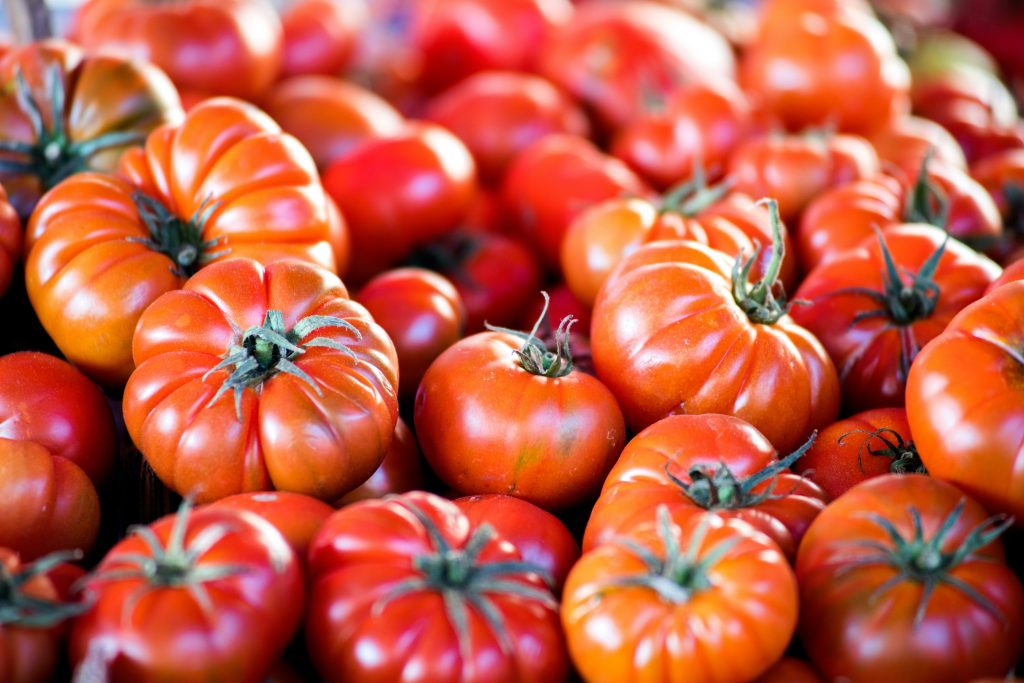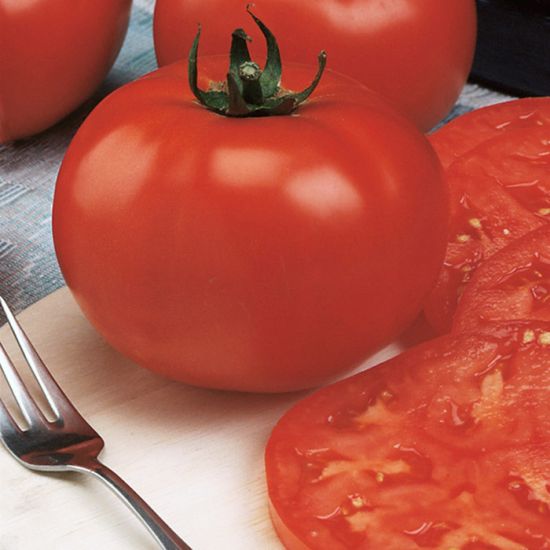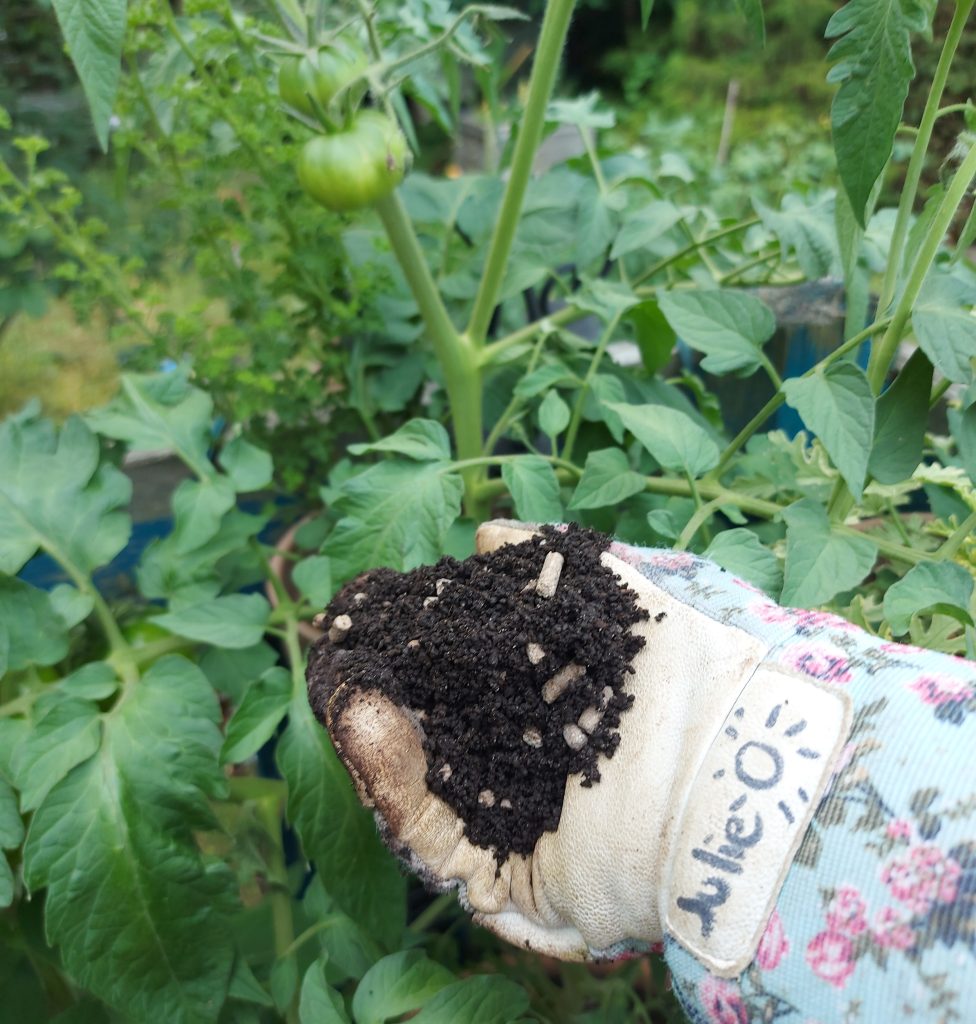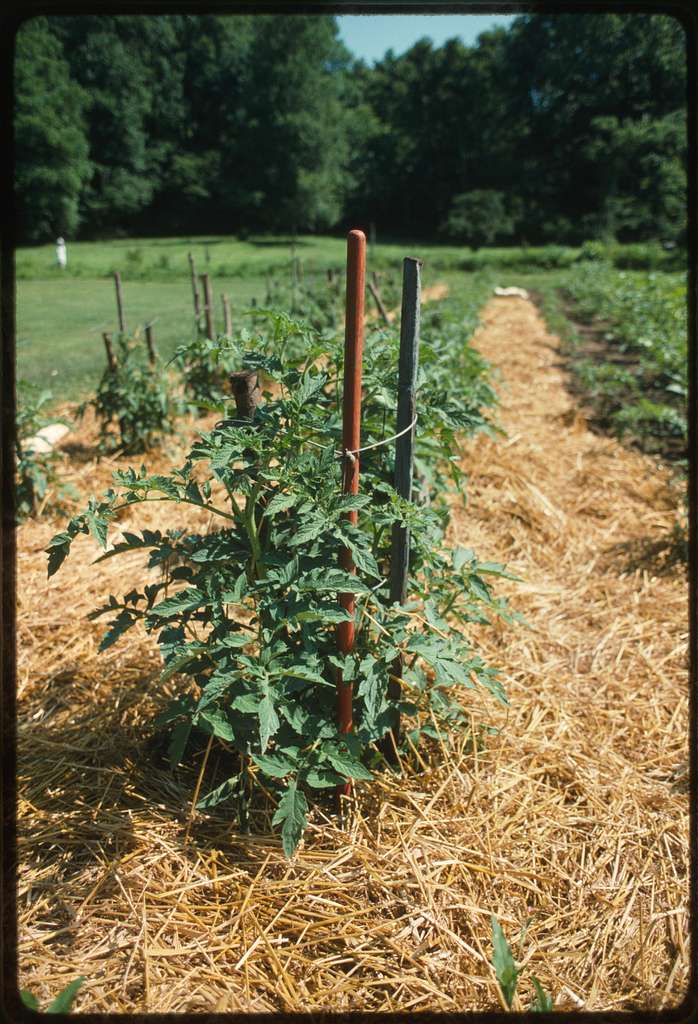Generally speaking, growing tomatoes in the vegetable garden is very simple. It’s often what we recommend to beginners because it easily produces satisfactory results. But then, suddenly, we come across that neighbor, that friend, or that uncle who’s pulling baskets full of tomatoes from his garden, while your harvest is… let’s say, okay. How does they do it? What’s the trick to achieving a tomato crop that exceeds our expectations? Here are some tips to follow.

Choosing the Right Variety
With over 400 tomato varieties readily available, there’s something for everyone. For some gardeners, flavor is what matters. Others only have eyes for cherry tomatoes or sparrow tomatoes. For northern gardeners, early production will be the priority. And finally, for those who want a generous tomato crop, there are also varieties whose main quality is productivity.
Among these champions, we can highlight the exploits of the ‘Big Beef’ tomatoes, ‘Carmello’, ‘Rose de Berne’, ‘Ace 55’, ‘Stupice’ or ‘Red Snapper’. Lovers of Italian tomatoes must discover ‘Federle’ as well as an improved version of the ‘San Marzano ‘ called ‘Marzinera’. Also, even if all cherry tomatoes are very productive in general, the ‘Red Pear’ and the ‘Red Currant’ are, in my opinion, the two most productive varieties of this group, even if many only swear by the ‘Super Sweet 100’.

Choosing the right variety will also depend on disease resistance. Of course, a tomato plant that quickly succumbs to late blight is unlikely to produce abundantly.
Plant in Fertile Soil
This is a very important point. Every tomato is full of minerals that it draws from the soil. We often emphasize the importance of calcium and magnesium, which help prevent blossom-end rot. But we must not neglect the essentials, such as nitrogen, phosphorus, and potassium. Clay soils retain nutrients better, which is why tomato production is better in this type of soil. For sandy soils, where minerals are more easily leached, small doses of fertilizer should be applied frequently to ensure constant mineral availability.
In any case, applying compost, weekly liquid fertilization, or incorporating granular fertilizer into the soil are essential for good productivity. To have tons of tomatoes, fertilizers and amendments… you can’t do without them!

Plant in Soil That Can Retain Moisture
Logically, to absorb minerals, the plants will need water! Regular watering is also one of the keys to productivity! In very well-draining soils or when growing in felt containers, it’s even recommended to apply straw at the base of the plants.
And even if it rains, add water! Sometimes, because of the dense foliage of tomato plants, the water doesn’t necessarily reach the base of the plants. If you can keep the soil fresh at all times, that’s perfect. This means you can feel the coolness of the soil when you dig your fingers into the soil.

Control Weeds
While I have a thing for messy gardens, the gardener aiming for maximum tomato production will place a premium on weeding the base of the plants. The productivity obsessed gardener will see every weed as a competitor, stealing minerals that were meant for those precious tomatoes. Some (me, for example) will argue that weeds help keep the soil fresh, that the soil should never be left bare. But when the mission is “Total Tomatoes”, weeding is a must.
About Suckers (Who Aren’t Really Suckers)
When it comes to tomato productivity, it turns out that you get more tomatoes if you don’t prune the secondary stems. Generally, pruned tomato plants produce larger tomatoes, but in smaller quantities. If you’re interested in the ever-present debate about whether or not to prune tomato “suckers”, Larry has written a very comprehensive article on the subject, which is one of the most popular topics of discussion on this blog!
And there you have it, in a nutshell: the steps you need to follow to increase your production of beautiful tomatoes. Of course, not every garden will achieve the same results. The region, altitude, sunlight, and physical, chemical, and biological quality of the soil all come into the equation. This is one of the reasons why organic gardeners purchase seeds from a local supplier who grows in conditions similar to their own.
I would be very curious to know your favorite varieties for productivity as well as your tips and “grandma’s recipes” for having beautiful big tomatoes and large quantities! Don’t forget to indicate which region you are in, just to inspire the readers in your area!
I’m almost embarrassed to admit I live in USDA zone 9b, in an area that was famed for its commercial tomato production. I’ve had mixed luck with tomatoes in the past, but this year I planted Early Girl and Beefsteak tomatoes (the nursery didn’t give the variety, it was simply labeled Beefsteak) in fabric pots next to a south facing brick wall. The sheltered spot combined with the warmth reflected from the wall caused my plants to suddenly cascade with fruit. Both tomatoes are delicious, though I favor the Beefsteak for size, sweetness and juiciness. (Best tomato sandwiches ever!) I fertilize a bit with a slow release formula and soak the roots three times a week, more when it’s hot. I’m usually a flower gardener but tomatoes make it well worth the extra work. Also the compliments from the neighbors when I give them a few extras from my vines! It’s hard not to be proud of my tomatoes this year.
Alas, I no longer even try to grow tomatoes, having lost many years’ battles with aggressive marauding squirrels. I only had room for a few precious containers, and I tried everything short of electrified wire cages.